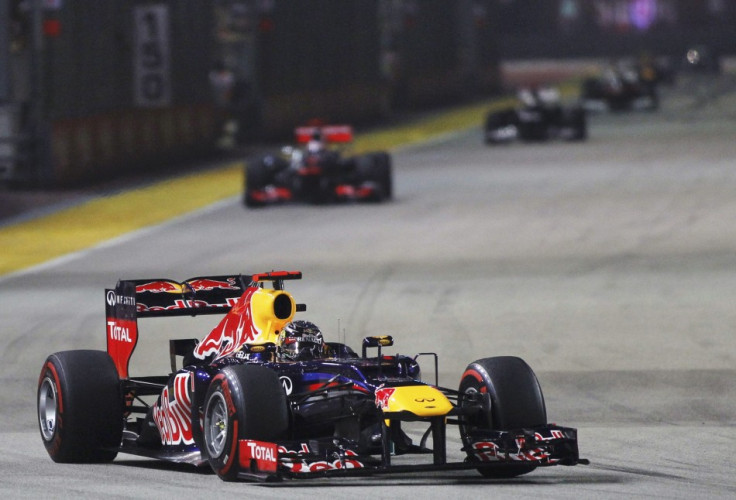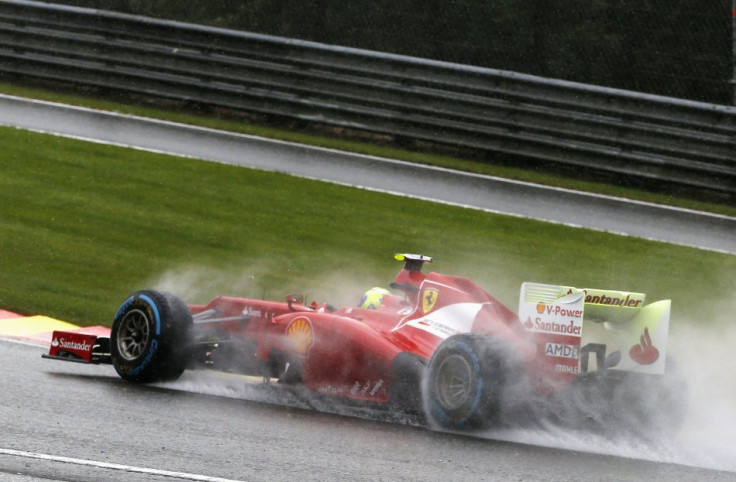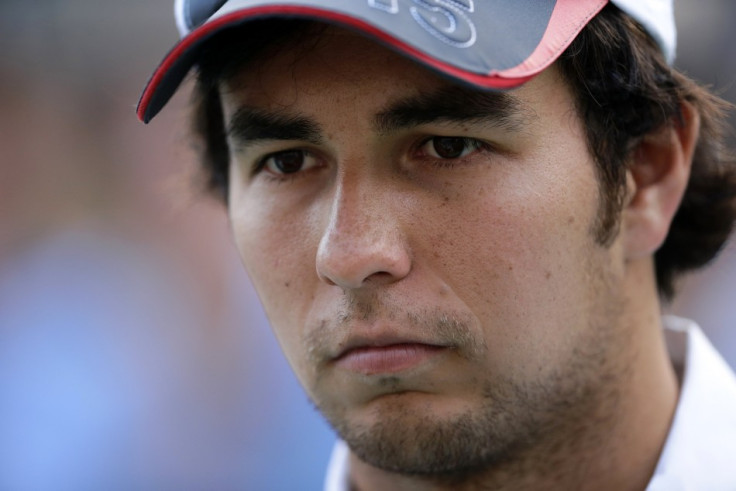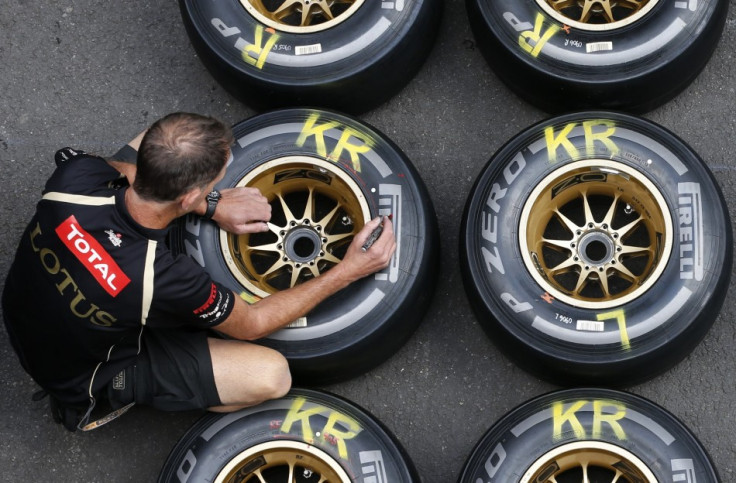F1 Japanese Grand Prix Preview: Driver Change at McLaren and Grid Penalty for Button

The race for the 2012 Formula 1 World Championship enters the home stretch, with only six races remaining. The drivers and teams will now contest the Japanese Grand Prix, around the historic and high-speed Suzuka circuit... the only "figure-of-eight" track on the calendar.
Sebastian Vettel's strong win at the Singapore Grand Prix, his first since Bahrain in April and only his second from 14 races this season, has put him back in contention to defend his 2011 drivers' championship. The Red Bull driver now has 165 points to championship leader Fernando Alonso's 194; the Ferrari driver has struggled, in recent races, to display the form that saw him take a commanding lead in the title race, in the weeks leading up to the mid-season break in August.
In the race for the constructors' title, McLaren-Mercedes' strong start to the second half of the season (the Woking team has won three of the last four races), coupled with the inconsistent form of defending champions Red Bull and Italian marquee outfit Ferrari, has seen them eat into the former's lead. Red Bull are still in front, though, with 297 points to McLaren's 261. Ferrari are third with 245 and Lotus-Renault continue to have an impressive season... they are fourth with 231 points.
Flying Lap
Suzuka is known for more than just the high-speed 130R (which drivers approach at speeds in excess fo 300km/h). Coming off the start-finish straight, the S-curves, a sequence of fast left and right corners leading into one another (similar to the Beckett's complex at Silverstone) is crucial to a good lap time of the track. The sequence starts at Turn 2... the first turn is right-handed U-turn, through which the car has to be perfectly balanced to maximise speed into and through the S-curves... and finishes with a long left-hander - the Dunlop Curve. Once again, the car has to be carefully balanced through this corner. Excess speed carried through the Dunlop can push the car out of the racing line for the following turn - the double right-handed Degner Curve - and, worse still, go off-track in the build-up to the Degner.

The right hander leading to the underpass, again, demands concentration. It is approached at approximately 180km/h but the turn tightens as you exit, forcing the driver to drop to 120km/h before a short burst uphill to the first-gear hairpin. The exit from here is critical because you are now entering the high-speed section of the track, beginning with the right-handed Turn 12 that leads into the Spoon Curve - which is approached at nearly 300km/h. As the car leaves Spoon, it begins to build-up speed, down the back straight and crosses back over itself (above the exit of Degner) before drivers sweep left through the infamous 130R. The final sequence is the Casino Triangle, a right-left chicane followed by a slow right-hander to take you back on to the start-finish straight.
Track Details
- Lap Record: Kimi Raikkonen (2005, with Ferrari): 1:31.540
- Track Length: 5.807km
- Number of Laps: 53
Start of Silly Season

The first news of driver changes for the 2013 season involves the 2008 world champion, Lewis Hamilton of McLaren. The British driver and team have been locked in talks to extend the contract between the two parties for some time now but a combination of financial disagreements and personal issues meant an accord was unlikely. Hamilton has, instead, signed a contract with the Mercedes works team and will replace German legend Michael Schumacher for the next season. McLaren, meanwhile, have announced the signing of Mexican driver Sergio Perez as Jenson Button's partner. Perez, who drives for Sauber this season, was earlier also linked with Ferrari, who supply engines to the Swiss team.
The news will leave Schumacher, a seven-time world champion, without a drive for next season. However, the former Ferrari ace insists he is not fazed by the prospect and will continue to drive his best for the team.
"My motivation is completely intact after the news last week, especially because Suzuka is one of the season's highlights for me. I enjoy the circuit - it has sections that challenge you as a driver like almost nowhere else. Then there are the fans: they love motor racing and it is fun to feel their passion," the 43 year old veteran told the sport's official Web site.
Pirelli Predictions

Meanwhile, French tyre company Pirelli (who supply the teams with tyres) have confirmed they will bring the P Zero Silver hard and P Zero Yellow soft to Suzuka. However, the company's motorsports director, Paul Hembery, cautioned teams about reading too much into the terms "hard" and "soft".
"Suzuka is definitely one of the highlights... from a technical point of view. While it might at first seem from the names of the compounds that we are bringing harder tyres to Japan this year, in fact they are softer," Hembery said, explaining that the hardness of the P Zero Silver compound had changed from that used last year (had become softer) but was still capable of performance through high-speed corners like the 130R (Turn 15).
Penalty for Button

Button has been handed a five place grid penalty, applicable after qualifying, for the Japanese Grand Prix. The McLaren driver incurred the penalty after being forced to change his gearbox ahead of schedule. The 2009 champion's gearbox is expected to fail at some point during the race at Suzuka, leaving the team no option but to change the component.
Driver Quotes
"It's a track that's all about aero so it's a real test of your car. I also found it very technical with corners like the 'S' curves where you need a good change of direction. Finding the sweet spot isn't easy because half the track is made up of straights so you need efficiency as well as downforce for the high-speed corners. Tyre degradation is also high so a neutral car is what you need during the race," Sahara Force India's Paul di Resta explained to his team's Web site.
"The preparation is more or less similar to the other races, although having said that, it's true that Suzuka is quite a demanding circuit to drive from the physical point of view," Ferrari's Felipe Massa explained, adding, "The fact that it has many high speed corners means you use a lot of muscular strength through the turns. So although physical preparation is more or less the same, with concentration on working the heart through aerobic exercise, we will do more work than usual on neck muscles for example, in the build up to Japan, to deal with the high G-forces."
© Copyright IBTimes 2025. All rights reserved.




















